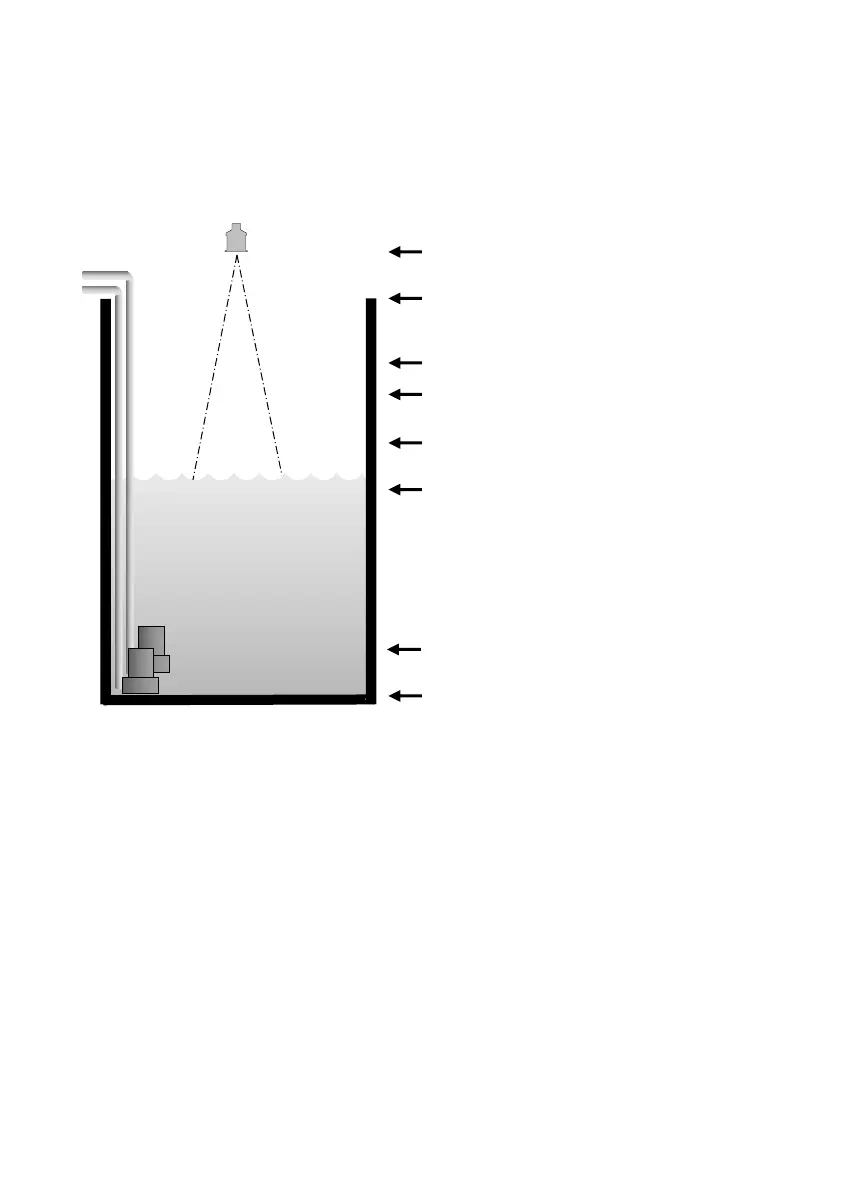PULSAR MEASUREMENT
71
Example 5 Sump Control (pump down)
A sump is typically used to temporarily hold water or effluent, and when the
level reaches a specific point, the sump is pumped down, with the fluid
being transferred to another process.
A sump is typically used to temporarily hold water or effluent, and when the
level reaches a specific point, the sump is then pumped down, with the fluid
being transferred to another process. In this example, there are two pumps,
which will be set to alternate duty assist, so they come on alternately.
Pump 1 is to be set to relay 1, pump 2 to relay 2, and the high-level alarm to
relay 3.
This will operate as follows. During normal operation, pump 1 will come on
at 1.4m (4.59 ft) and pump down to 0.56m (1.83 ft). The setpoints are then
shifted to pump 2, which will come on first next time the pumps are called
to run. During peak periods, when pump 1 cannot cope, pump 1 will come
on at 1.4m (4.59 ft), pump 2 will come on at 1.96m (6.43 ft) and pump down
to 0.56m (1.83 ft). The setpoints are then shifted to pump 2, which will come
on first next time.
